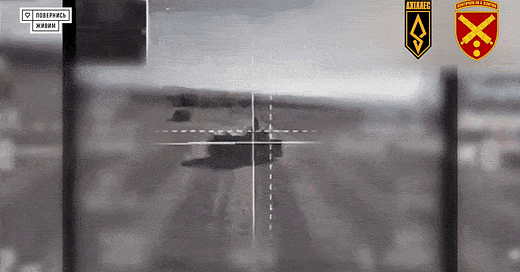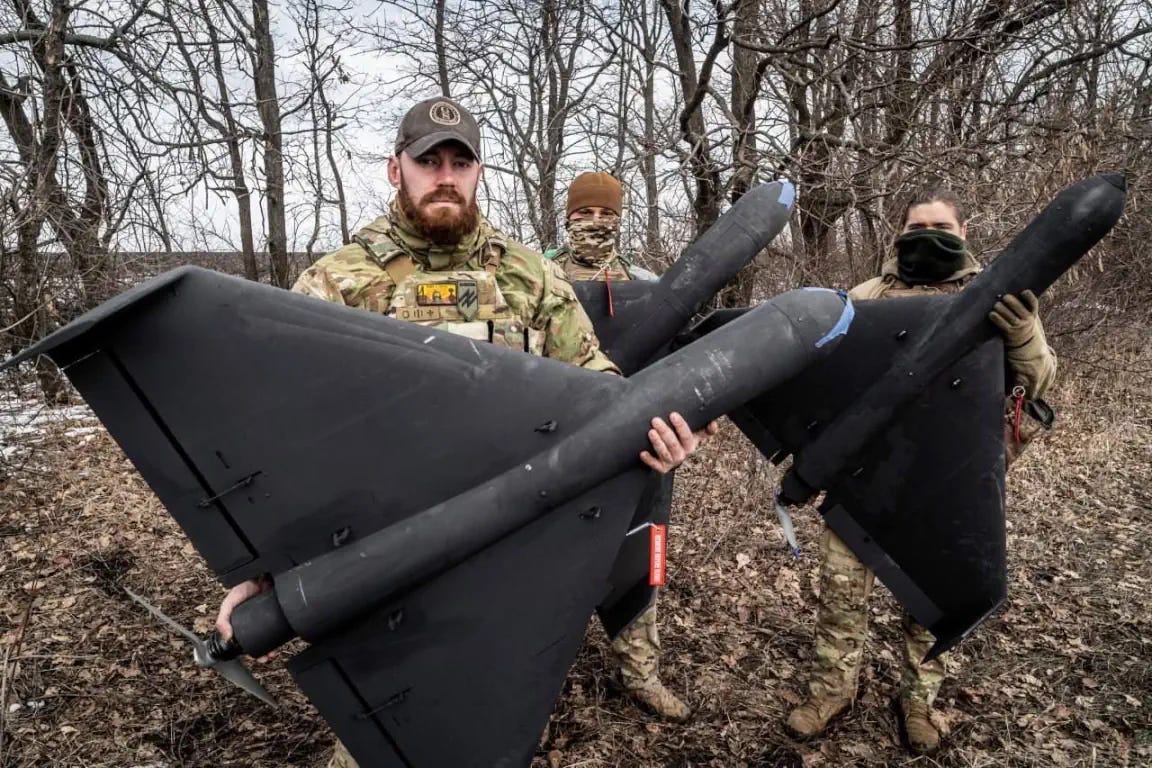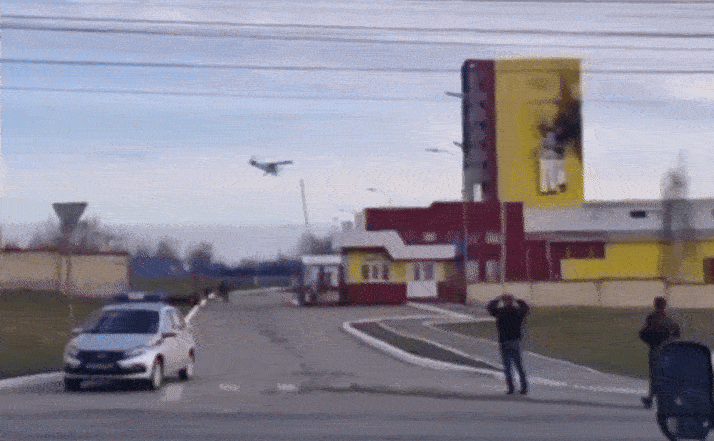Ukraine's Seth Drone Patiently Waited For a Russian Air-Defense Vehicle to Appear—And Then Attacked
A Seth loiters over the front line, scanning for the shapes of Russian vehicles
Hoping to peel away the short-range air-defenses defending Russian regiments in eastern Ukraine, a Ukrainian artillery brigade teamed up with a drone regiment—and deployed Ukraine’s newest attack drone, an autonomous loitering munition named Seth.
The 43rd Artillery Brigade and the 429th Unmanned Strike Regiment, also known as the Achilles Regiment, recently struck two Russian Pantsir air-defense vehicles. A Pantsir usually piles a radar, a missile launcher and an autocannon onto a wheeled chassis. It can engage drones, helicopters and low-flying jets as far as 12 miles away.
The Pantsirs can blunt Ukrainian drone operations and complicate close air support by manned helicopters and jet. That makes them top targets for Ukrainian artillery gunners—as well as for the same drones and manned aircraft the Pantsirs aim to shoot down.
Russia went to war in Ukraine in 2022 with around 120 Pantsirs, and has lost at least 30 of them. The recent strikes could increase that tally by two.
It’s unclear where the attacks took place. The 43rd Artillery Brigade has been spotted around the ruins of Toretsk in eastern Ukraine, where Ukrainian brigades have been slowly pushing back Russian regiments south of the city. The 429th Unmanned Strike Regiment was last observed farther to the north along the eastern front line.
It would make sense if the units are supporting the Toretsk counterattacks, as the new Seth drone made its debut in the same area last month with the 12th Azov Brigade.
Complex raids
The recent Pantsir strikes were complex. First, the 43rd Artillery Brigade and the 429th Unmanned Strike Regiment launched Shark reconnaissance drones that lazily surveilled the front line for signs of Russian activity. “One of the Sharks, which we handed over to the brigade, found the target,” reported Come Back Alive, a Ukrainian foundation that raises money for drones and other equipment.
The Ukrainian units targeted two Pantsirs with attack drones. Based on the interface in the resulting video montage, one of the attack drones was a new Seth. The Shark surveillance drones “confirmed the hit,” Come Back Alive noted.
A Seth flies circles over a pre-defined stretch of the battlefield, scanning for the distinctive shapes of Russian vehicles. The propeller-driven drone automatically homes in, striking with a warhead weighing around 10 pounds.
A Seth can send video back to its operators, but may not have to. It keeps station by way of a multi-channel GPS receiver that’s resistant to jamming—an increasingly serious problem for the operators of less sophisticated drones on both sides of the wider war.
Short of simply shooting it down, a Seth is hard to defeat. The Pantsir should be just the system for spotting and downing drones like Seth. But Russian air-defenses are prone to embarrassing failures. In this case, the failures may have been fatal for the Pantsirs’ crews.
Read more:
Ukrainian Drones Double-Tapped the Factories That Make Parts for Russia's Best Fiber-Optic Drones
On the night of April 4, a dozen Ukrainian attack drones motored 460 miles into Russia and struck a fiber-optics factory in the city of Saransk. The next morning, at least one more Ukrainian drone struck another building belonging to the fiber-optics industry in the same city.







